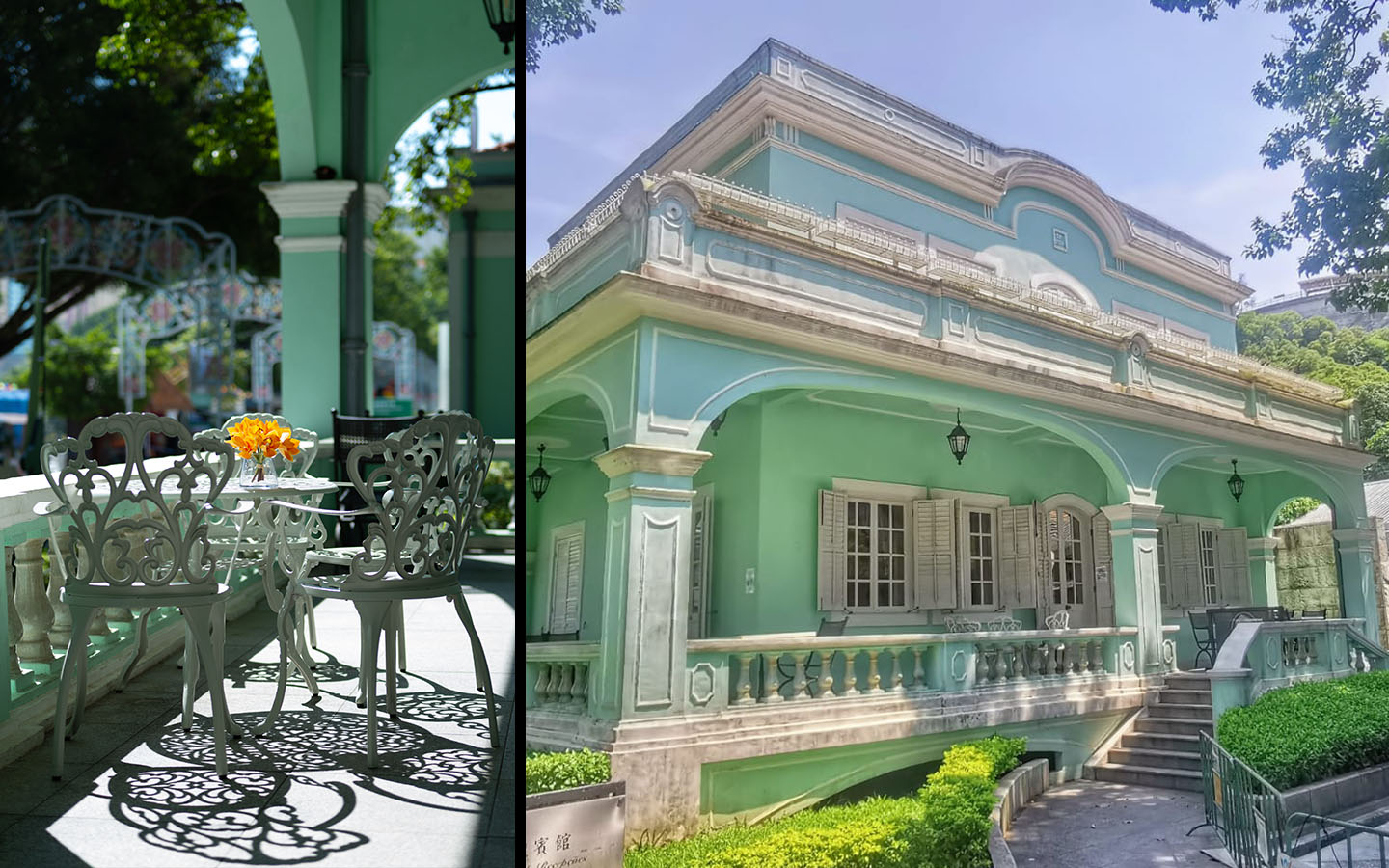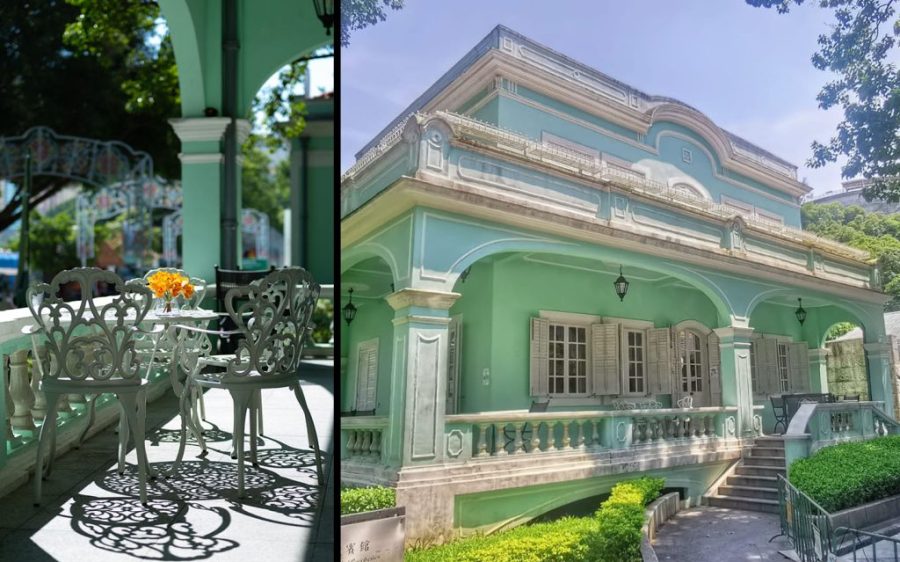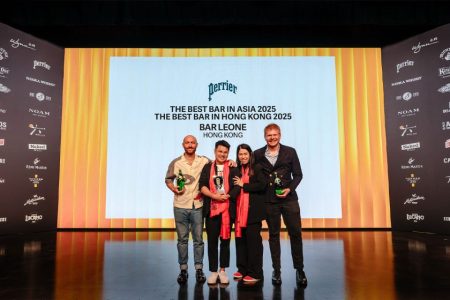One of Taipa’s century-old, turquoise-coloured homes has taken on a new life as a restaurant – Casa Maquista. In its original incarnation, the house was a residence for senior civil servants before becoming a venue for receptions. Now, it’s a home for Casa Maquista’s family-style Macanese meals, with the restaurant hoping to find a wider audience to experience Macao’s culinary heritage, and a uniquely Macanese way of life.
The new eatery’s menu is managed by executive chefs Pedro and Mauro Almeida, brothers who also oversee the food served at its sister restaurants ALBERGUE 1601 and Portucau. While their other establishments focus on Portuguese classics like bacalhau à brás (salted cod with potato and scrambled eggs) and arroz de marisco (seafood rice stew), Casa Maquista is dedicated to sharing Macanese specialities best enjoyed with family and friends. Think porco bafassá (turmeric-laden Iberico pork), vaca chau chau parida (stir-fried beef with ginger and port wine) and caril de camarão com quiabos (shrimp curry with okra).
A culinary challenge
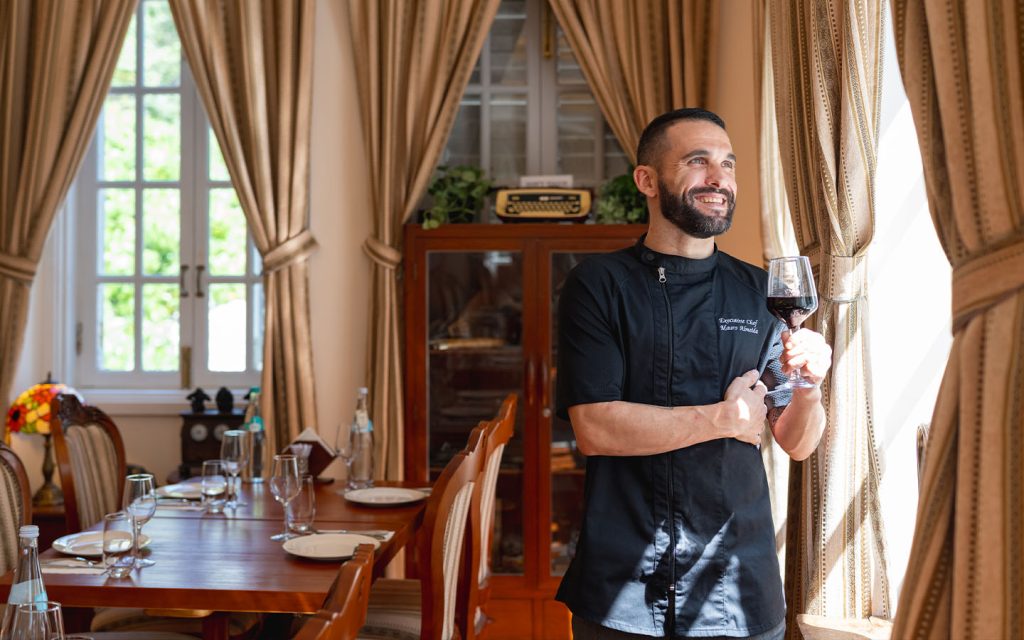
Crafting Casa Maquista’s menu was no easy task. While Macanese cookbooks do exist, recipes within this community are rarely shared beyond immediate family circles: they tend to be transmitted to younger generations verbally, within the confines of private kitchens. Some of the best home cooks even take their signature recipes with them to the grave, says Annabel Jackson, author of The Making of Macau’s Fusion Cuisine: From Family Table to World Stage.
According to Jackson, Macanese dishes are tightly intertwined with personal identity and family heritage. “No one would ever say that someone else’s recipe is better than their own family’s concoction,” she notes. And even if you do have a written recipe, the dynamic nature of Macanese dishes make them difficult to even conceptualise as a standardised product. Then there’s the fact that these older recipes often use outdated measurements and equipment, making them tricky to replicate. Eggs, for example, are larger today than they were half a century ago, meaning fewer are needed in modern adaptations. Contemporary stoves and ovens can also influence the cooking process in ways that previous generations would not have been familiar with.
Chef Pedro Almeida tells Macao magazine that it took a lot of “detective work” to settle on what, exactly, should be served at Casa Maquista. “There’s a bit of trial-and-error and imagination that goes into executing our dishes, especially when comparing the resources available now to what was around back then.” His brother, Mauro Almeida, adds that “hundreds of tests” went into finalising their menu.
[See more: Top 5 restaurants in Macao for Macanese food]
All that hard work and experimentation appears to be paying off. Some of the new restaurant’s highest praise comes from those qualified to be its harshest critics: the Macanese community. For them, Casa Masquista serves up “Ratatouille moments” – a reference to the Disney film, where a single bite transports the Parisian food critic Anton Ego back to his childhood, triggering a flood of happy memories.
Stephen Handley, general manager of Hong Kong’s Club Lusitano – a private member’s club with deep roots in that city’s Portuguese and Macanese community – recently dined at Casa Maquista and described the Almeidas’ take on capela (Macanese-style meatloaf) as tasting just like his grandmother’s. When asked if the chefs should make any tweaks, his response was simple: “Don’t change a thing.”
Handley’s sentiment is shared by Ivo de Noronha Vital, vice president of Portuguese Association of Translators and author of an upcoming book about the history of Macao. Vital’s Ratatouille moment came in the form of a refreshing Macanese beverage: “The smooth, sweet taste of fig syrup blended with the fresh crispness of soda water transported me to the simpler, very hot and humid, time of my childhood.”
Defining Macanese flavour
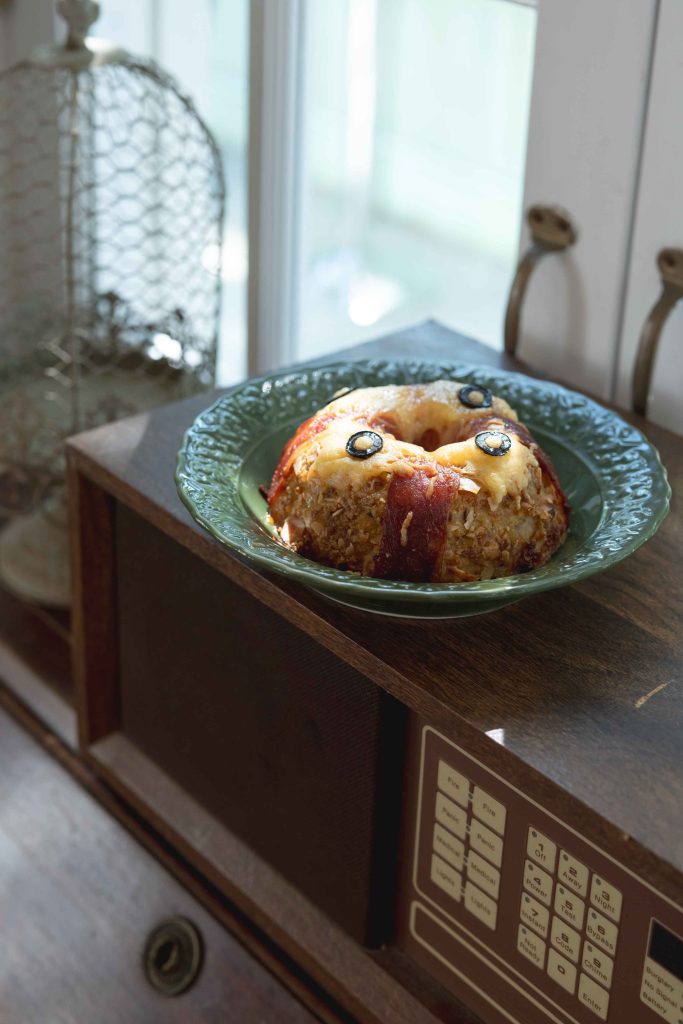
It’s Casa Maquista’s commitment to authenticity that sets it apart from other restaurants, says Asai, a co-founder of Portuguese Restaurants & Retail Concepts (PRRC), which operates Casa Maquista along with ALBERGUE 1601 and Portucau. The local entrepreneur, who prefers to go by his first name only, explains that it is quite common to find Portuguese and Macanese dishes served simultaneously at restaurants in Macao. Asai worries that this gives patrons the impression that the two cuisines are one and the same when really they are remarkably distinct.
While Portugal’s coast is Atlantic, the country’s pork and seafood centric-food is heavily influenced by the Mediterranean, largely thanks to the Roman occupation of the Iberian Peninsula more than 2,000 years ago. Macanese cuisine, on the other hand, has been developing over the past 500 years and has a more exotic range of influences. It dates back to the Age of Discovery, when Portuguese explorers set sail around Africa’s coastline to reach Goa, Malacca and eventually Macao, adapting their native culinary instincts to new ingredients and techniques encountered along the way. Macanese food blends the Portuguese’s passion for salted cod and port wine with Southeast Asian ingredients like turmeric, coconut milk and shrimp paste; spices from Africa and India; plus that southern Chinese staple, soy sauce.
[See more: Macanese cuisine: One recipe, two generations]
Jackson, the cookbook author, understands Asai’s concerns. But she also believes that confusion around the two cuisines is likely inevitable, and says it reflects “the depth of Macao’s cultural and culinary diversity”. Jackson points to the ubiquitous egg tart as an example of this in action. In Macao, the term ‘egg tart’ can refer to any of three distinct confections: the Chinese dan tat, the Portuguese pastel de nata and a local invention served at the iconic Lord Stow’s Bakery. The latter, perhaps the city’s most sought-after, was created by an Englishman in the late 1980s.
A home for history
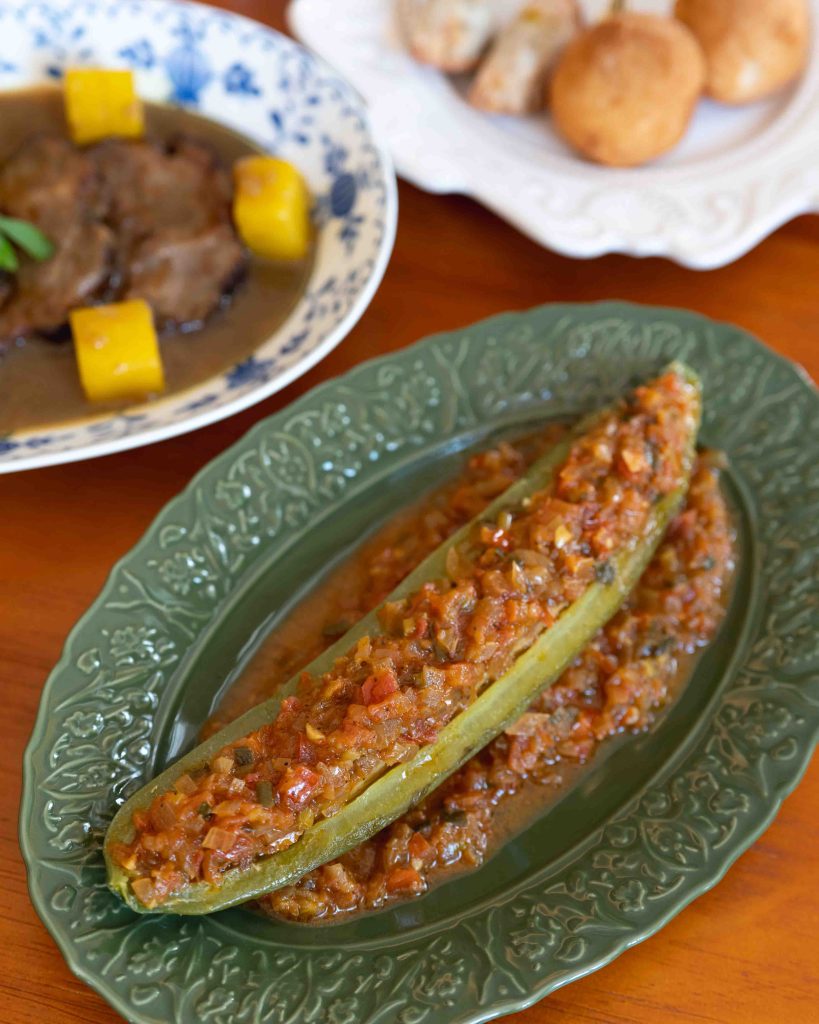
Cited as one of the world’s first fusion cuisines, Macanese gastronomy is classified as part of Macao’s intangible heritage by the Cultural Affairs Bureau – and the building that houses Casa Maquista holds heritage value itself. It is one of the five Taipa Houses, a striking row of Portuguese neo-classical-style villas along Avenida da Praia, built in 1921. Now managed by the Cultural Affairs Bureau, these buildings were first opened to the public in 1999 for the purpose of showcasing life in early 20th century Macao. Casa Maquista – with its traditional food, antique furniture and Portuguese crockery collection displayed on its walls – fits this remit perfectly. It currently rubs shoulders with a museum, a bookshop and two galleries.
Since opening its doors in early June, the restaurant has been welcoming not only guests, but also the memories of its area’s former inhabitants, says Ricardo Balocas, PRRC’s general manager. “I periodically receive phone calls thinking it is a customer looking to make a table booking, but before I can even say anything, the person on the line says, ‘Hi, I used to live or work in your restaurant,’ then follows it up with an elaborate and personal story,” he explains. Balocas sees these anecdotes as testament to the Taipa Houses’ strong cultural resonance within Macao.
Among those who have reached out include Gastão Humberto Barros Jr., whose family lived in Casa Maquista’s building in the early 1960s late 19960s – when his father served as the deputy mayor for Taipa and Coloane. Barros has shared numerous old photographs with Balocas, including pictures taken inside the home during family dinners and formal banquets. These are now on display at the restaurant.
Like those photographs, the area adjacent to the Taipa Houses appears almost frozen in time. Above the turquoise-coloured former residences is the yellow exterior of Our Lady of Carmel Church, built in the late 19th century, along with a Portuguese-era former school building currently serving as the marriage registry for Taipa. And yet, just beyond the now enclosed lake, the skyline reveals that time has marched forward. Towering casino-resorts have replaced what was once the waterway between Taipa and Coloane, creating a striking contrast to the quaint old neighbourhood below.
Though the evening sky now glows with neon lights, strolling past the Taipa Houses feels like stepping into history. And as old memories return to Casa Maquista, new ones are created every day, adding a fresh chapter to Macao’s evolving gastronomic story.
This article first appeared in the December 2024 issue of Macao magazine
